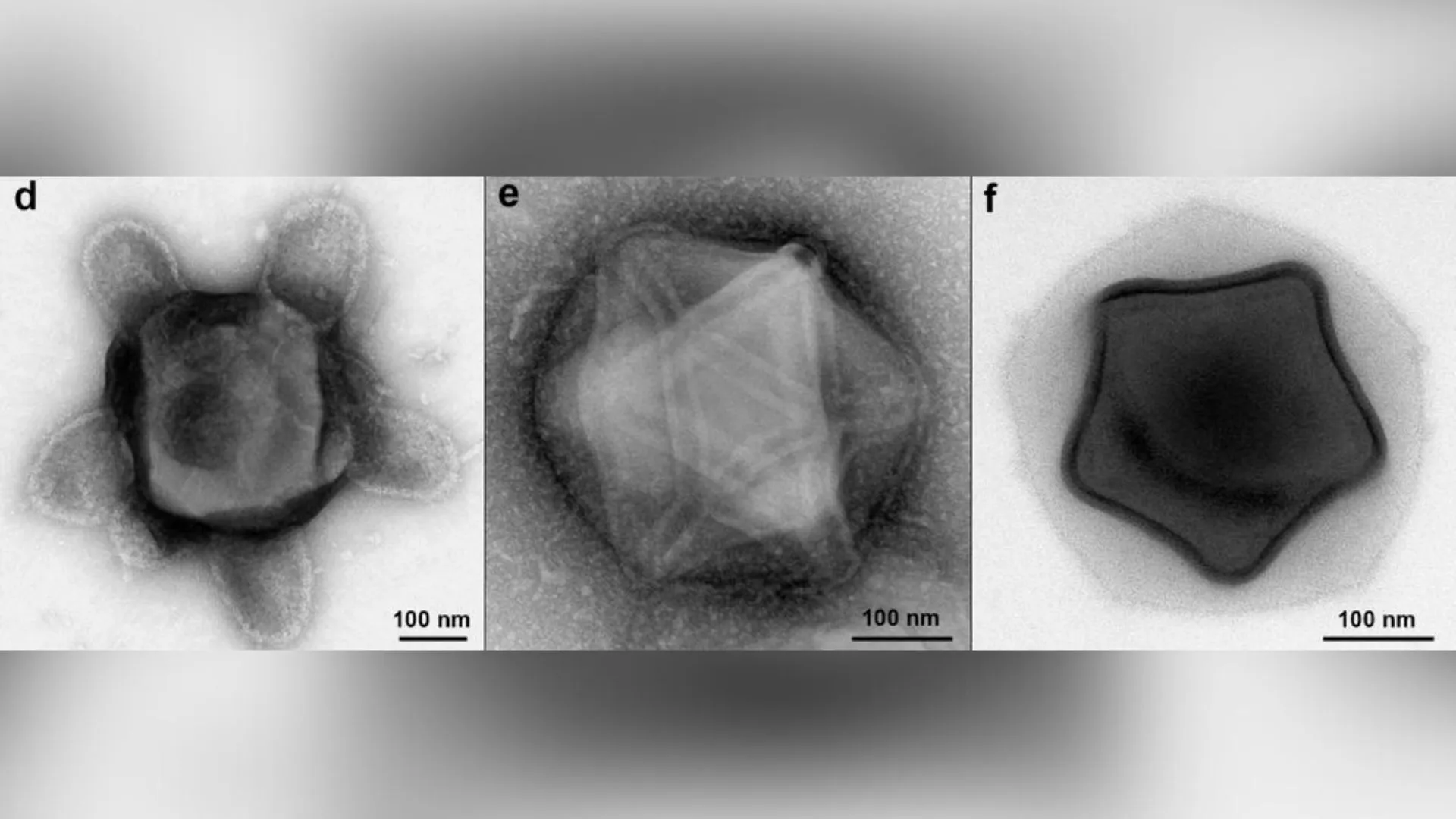Bizarre giant viruses with tubular tentacles and star-like shells discovered in New England forest
Originally published on Live Science by Kiley Price on August 1, 2023
Giant viruses are much more diverse in shape and size than scientists previously thought, according to a new study.
(Left to right) Scientists discovered these never-before-seen giant viruses that are known as the "turtle," "plumber" and "Christmas star" morphotypes, based on their shapes. (Image credit: Fischer et al. DOI: 10.1101/2023.06.30.546935(CC-BY-NC-ND 4.0 International license))
What we found is a whole new diversity of shapes that we have never seen before," study co-author Matthias Fischer, a virologist at Max Planck Institute for Medical Research in Germany, told Live Science. "I would bet that many of those, if not the majority, are completely new and first sightings of viruses that we have never seen before."
Giant viruses usually range from 0.2 to 1.5 micrometers in size and have complex genomes that can carry up to 2.5 million DNA base pairs, according to the study. That's much larger than most viruses, such as influenza viruses, which range from 0.08 to 0.12 micrometers in diameter. So far, giant viruses have primarily been found to infect single-cell organisms, like amoebas, rather than animals or humans. This category of viruses has been found in ecosystems all around the world, including oceans, lakes in the Arctic and even melting permafrost.


Comments
Post a Comment